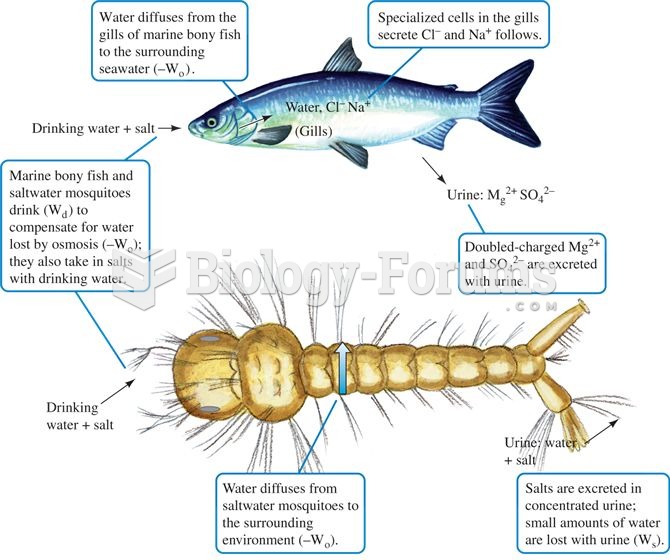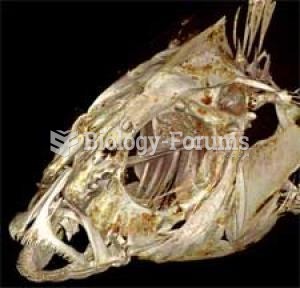Answer to Question 1Fish are cold-blooded vertebrates that breathe with gills and move with the aid of fins. They are the most
numerous vertebrates, with more than 30,000 species. Most fish are covered with scales, which are thin, bony
plates that overlap each other and provide protection.
The skin contains chromatophores, pigment cells that give the fish its colors. The colors a fish has usually
allow it to blend with its surroundings, and most fish are able to change their colors if necessary. Sensory
receptors are also contained in the skin.
Fins are movable structures that aid fish in swimming and maintaining balance. Most bony fish have
rayed fins.
Fish breathe through organs called gills. Water is drawn in through the mouth by the constant opening
and closing, forced back into the pharynx, and exited out through the gills.
Most bony fishes have swim bladders in their abdominal cavities. The swim bladder is filled with gases
produced by the blood that enable the fish to maintain itself at a particular depth.
The fish heart consists of two chambers: the atrium and ventricle.
Most fish have lateral lines composed of a series of pressure-sensitive cells. These cells, or neuromasts, are
contained in tubes along the lateral line.
The digestive systems of fish vary depending on the type of food consumed.
The eyes of fish are similar to those of other vertebrates but differ in a couple of ways. The fish's eye has a
spherical lens that focuses by moving within the eyeball, not by changing the curvature of the lens. Fish do
not have eyelids; the eye is kept moist by the flow of water.
All fish have inner ears. Species that have swim bladders have a more acute sense of hearing because the
bladder acts as a resonator and amplifies the sound.
Fish have taste buds in their mouths, on their lips, and on their bodies and fins. Their senses of smell and
taste are highly developed. Some fish have taste buds on their barbels, which are whisker-like projections
around their mouths.
Answer to Question 2 Psittacine beak and feather diseaseThis disease is indicated by a lack of new feathers and soft beak and
nails; there is no cure. Treatment to control secondary diseases and supplements of vitamins and minerals
may prolong the life of the bird.
Newcastle diseaseDepression, loss of appetite and weight, sneezing, and head bobbing are symptoms.
There is no cure, and treatment is not recommended.
Pacheco's parrot diseaseSudden death or a brief period of anorexia, depression, and diarrhea may
indicate this disease. It can be prevented by vaccination, with a yearly booster.







